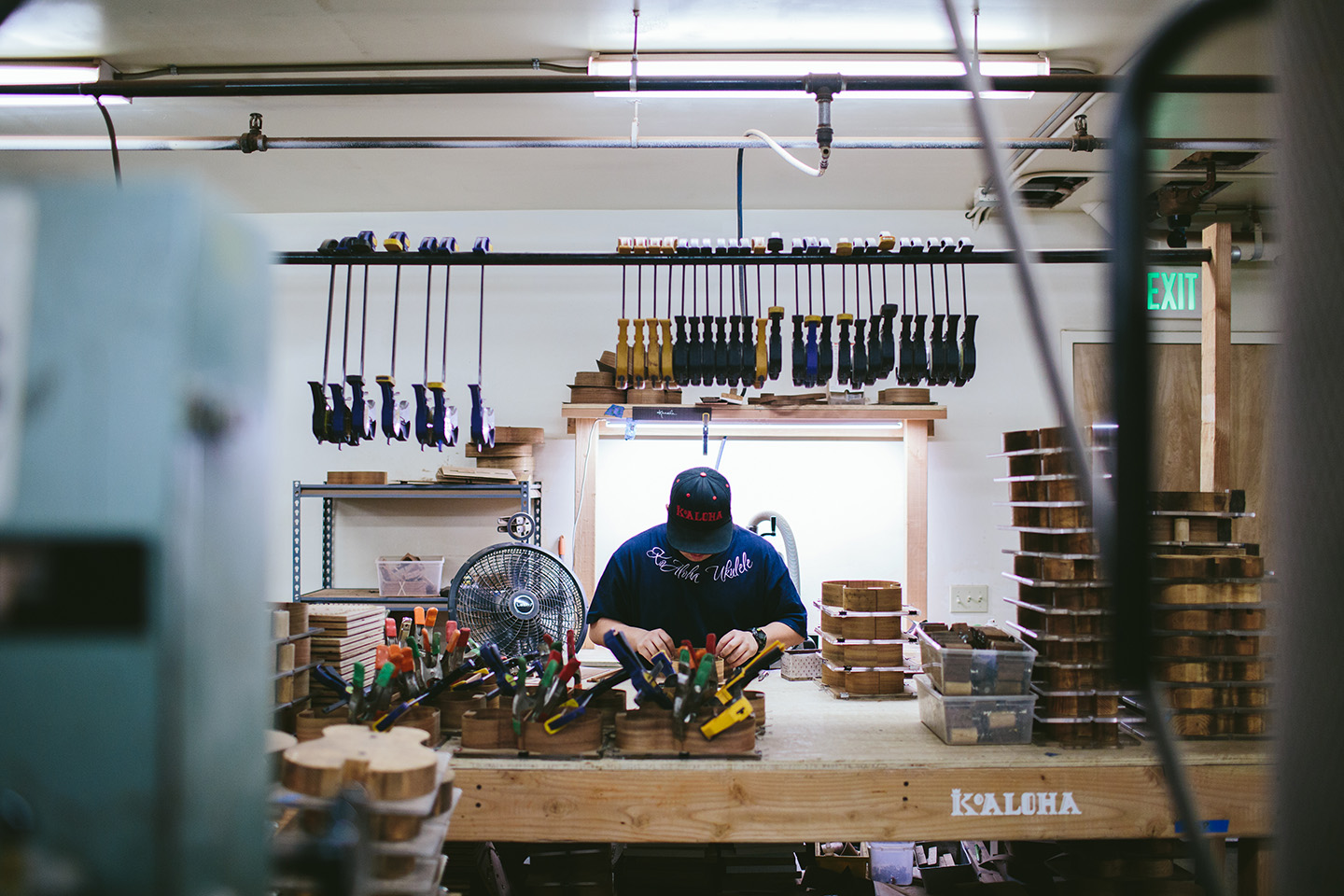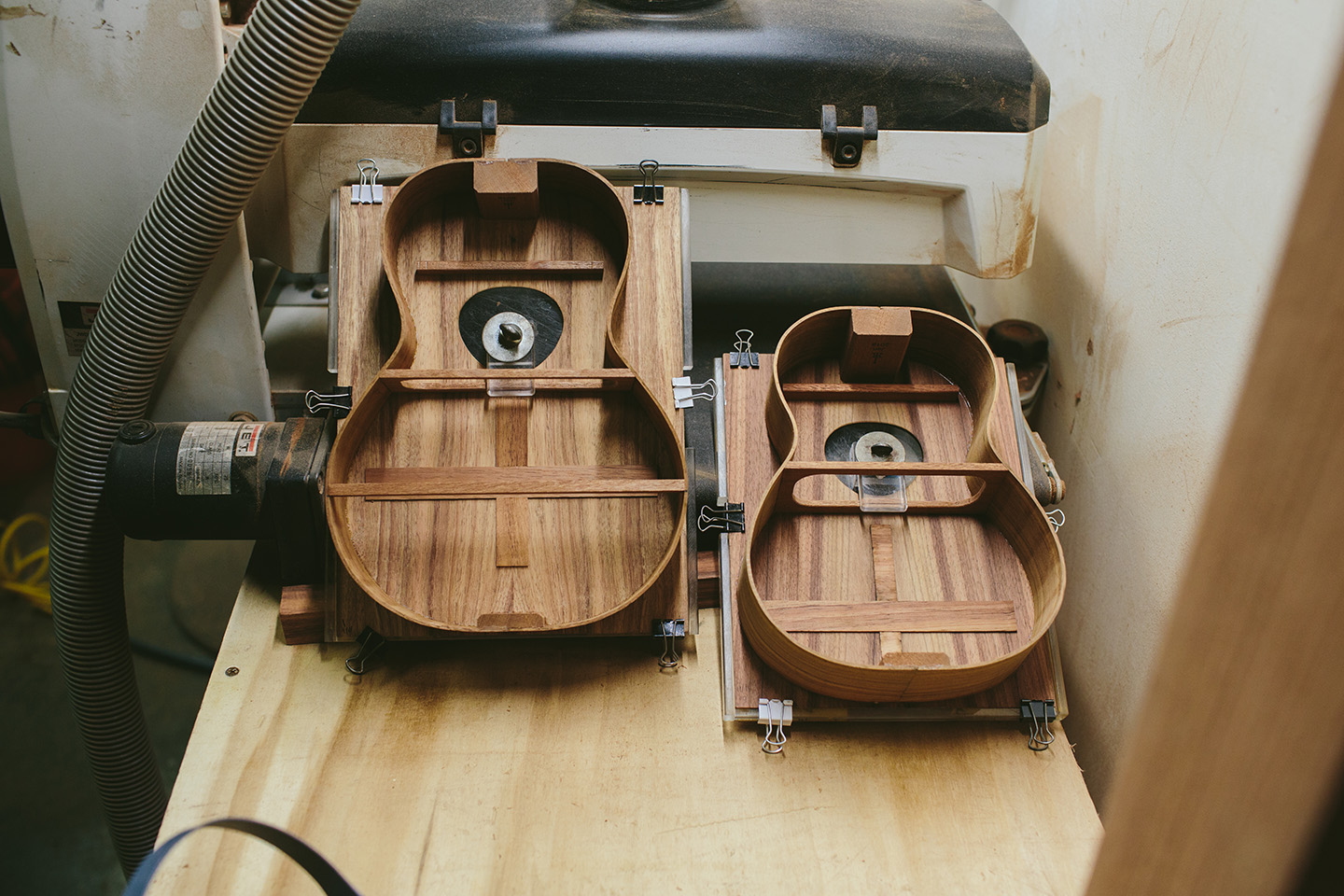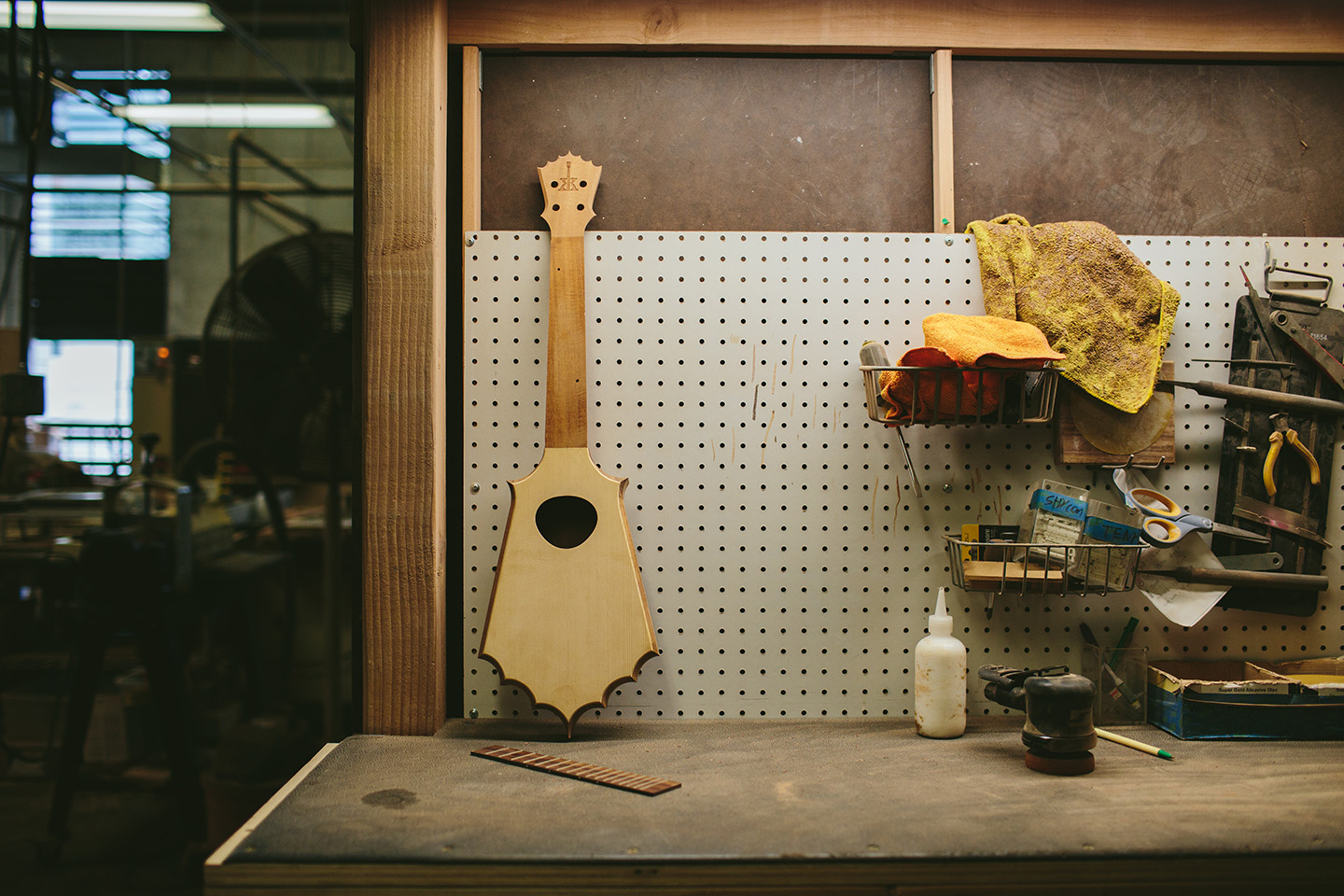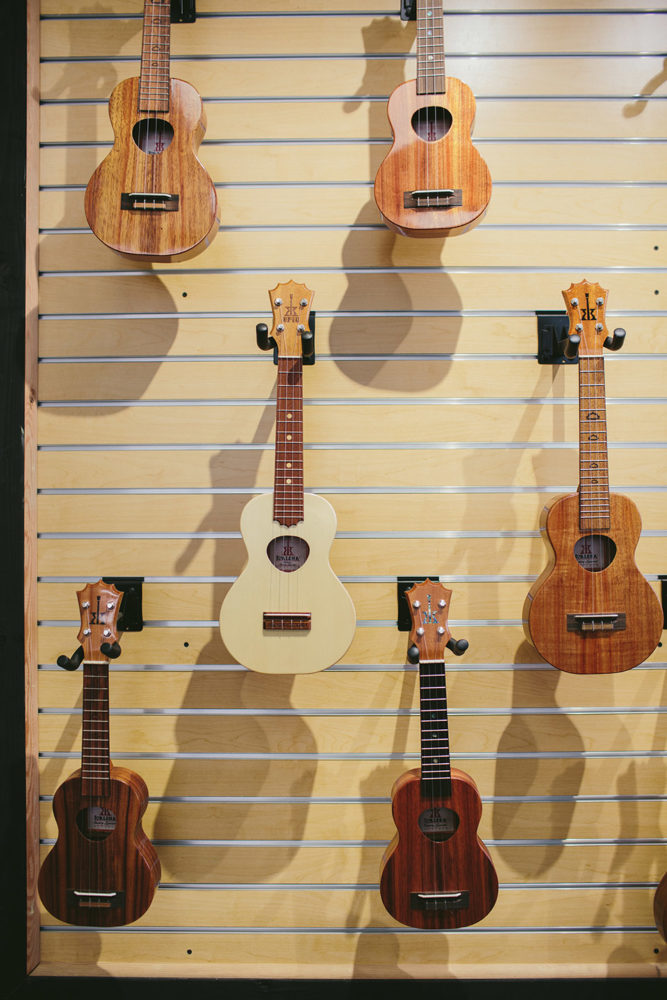The harmonious sound of a KoAloha ‘ukulele is the result of the company’s dedication to craftsmanship.
When the founder of KoAloha Ukulele, Alvin Okami, wanted to shift the focus of his family business from manufacturing plastics to creating miniature wooden ‘ukulele figurines, Alvin’s son, Alan, wasn’t too thrilled. “We didn’t know a thing about making ‘ukulele,” says Alan, who is now KoAloha Ukulele’s president. “I didn’t think it was a good idea.”
His father’s notion was based on a tip that he had received from Herb Ohta, also known as Ohta-San, a professional musician and ‘ukulele player in Hawai‘i. Ohta had told Alvin that tourists regularly requested miniature ‘ukulele at his sister’s souvenir shop at Kahala Mall in Honolulu, as mementos of their vacations.
As the cost of plastic materials had been rising, Alvin was on the lookout for another production venture for the company.
But Alan, who was in charge of the business’s finances, worried that selling miniature ‘ukulele would only get them deeper in debt. Eventually, he realized it was his father’s decision to make, and he helped his family launch KoAloha Ukulele in 1995.
Each ‘ukulele is handcrafted by aspiring luthiers, who must perfect each step of the process for up to a year at a time.
Today, KoAloha Ukulele has grown from making miniature ‘ukulele figurines for tourists to crafting renowned ‘ukulele instruments. Its ‘ukulele are sold in nearly 100 stores throughout the world. “It’s amazing how far we’ve come,” Alan says. “I never thought I’d say this, but I love my job, and can’t imagine doing anything else.”
Lloyd Manamtam, KoAloha Ukulele’s consumer relations and showroom manager, credits the success of KoAloha Ukulele to its unique sound, shape, and craftsmanship. Customers rave about the instruments’ bright tone, and are intrigued by the shape of its sound hole, which resembles a Japanese rice ball, or “musubi.”

“Everything about our ‘ukulele is carefully handcrafted,” Manamtam says as he points to the ‘ukulele styles mounted on the wall in the Kaka‘ako factory’s showroom. Over the years, he says, the company’s ‘ukulele has evolved to include an internal core structure, an invention specially made by Alan Okami. The result is a masterpiece that is both light and durable.
This core structure of KoAloha’s instruments starts with a unibrace skeleton, which strengthens each ‘ukulele. Shaped like a mini windowpane, it is inserted between the sides, below the sound hole, where the ‘ukulele starts to curve into a pear shape. Two wooden pieces, the length and width of a tongue depressor, are then crossed right below, followed by a thin wooden brace that helps hold the shape of the body. Once its sturdy bones are set, the ‘ukulele is squeezed into a corset of metal clamps, then fitted with the final backing of wood, such as koa, mahogany, or rosewood.

Other steps include shaping the ‘ukulele’s signature five-pointed crown headstock, creating the fretboard, and buffing its edges. It’s a long process, says Manamtam, but worth the result. In a single day, 20 ‘ukulele are completed. Each is handcrafted by aspiring luthiers, who must perfect each step of the process for up to a year at a time.
While dedication to craftsmanship is what the company is known for, KoAloha Ukulele’s sense of family, among its workers and its customers, is also part of its identity and success.
“Our customers can sense that quality and pride in our ‘ukulele,” Alan says. “You can hear it in the sound that it makes too. That’s the sound of aloha.”



